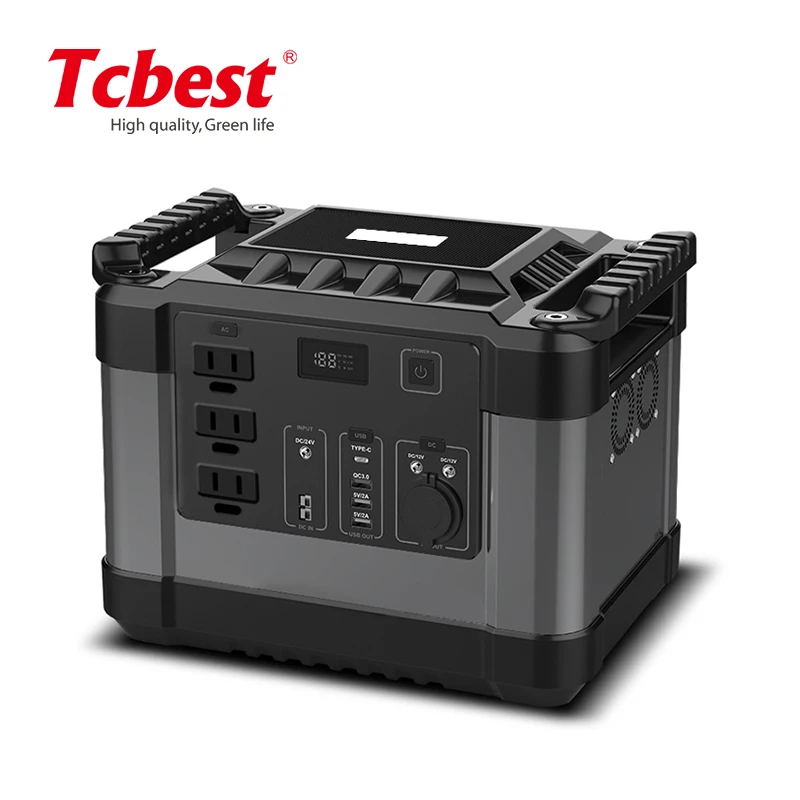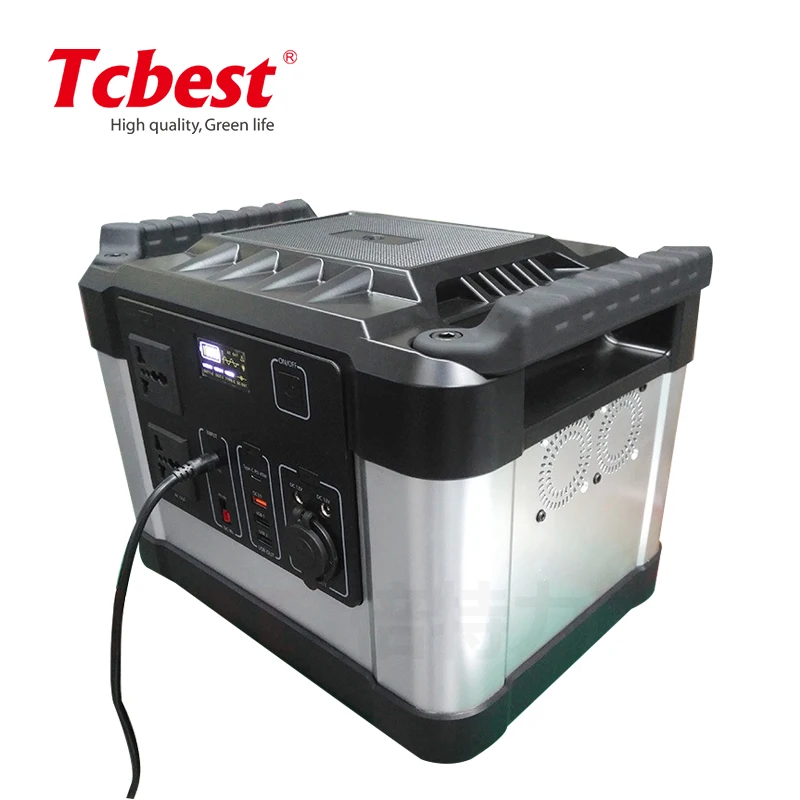တိုးတက်မှုရှိသော ဘက်ထရီနည်းပညာဖြင့် ဓာတ်အားစနစ်များ၏ တော်လှန်ရေး
ကျွန်ုပ်တို့၏ အလျင်အမြန် ပြောင်းလဲနေသော ကမ္ဘာတွင် အားသတ်ဆက်ထားမှု ဘိတ်တီးရီ ခေတ်မီစွမ်းအင်အခြေခံအဆောက်အအုံ၏ အဓိကကျသောအစိတ်အပိုင်းများအဖြစ် ပါဝင်လာခဲ့ပါသည်။ ဤရှုပ်ထွေးသောစနစ်များသည် လျှပ်စစ်ဓာတ်အားကို ထုတ်လုပ်ခြင်း၊ ဖြန့်ဖြူးခြင်းနှင့် သုံးစွဲခြင်းကို ပြောင်းလဲပေးလျက် ပိုမိုခိုင်မာပြီး ရေရှည်တည်တံ့သော စွမ်းအင်အနာဂတ်ကို ဖန်တီးပေးနေပါသည်။ ပြန်လည်ဖြည့်တင်းနိုင်သောစွမ်းအင်အရင်းအမြစ်များ ပိုမိုကျယ်ပြန့်လာသည်နှင့်အမျှ စွမ်းအင်သိုလှောင်မှုဘက်ထရီများသည် မှီခိုနေရသော ဓာတ်အားထုတ်လုပ်မှုနှင့် ယုံကြည်စိတ်ချရသော စွမ်းအင်ပေးပို့မှုကြားတွင် အရေးပါသော ချိတ်ဆက်မှုအဖြစ် ဆောင်ရွက်ပေးနေပါသည်။
စွမ်းအင်သိုလှောင်မှုဘက်ထရီများကို ကျွန်ုပ်တို့၏ ဓာတ်အားပေးစနစ်များတွင် ပေါင်းစပ်ခြင်းသည် မကြာသေးမီနှစ်များအတွင်း အရေးပါသော နည်းပညာဆိုင်ရာ တိုးတက်မှုတစ်ခုဖြစ်ပါသည်။ ဤစနစ်များသည် ဓာတ်အားပေးစနစ်၏ တည်ငြိမ်မှုကို မြှင့်တင်ပေးရုံသာမက ပြန်လည်ဖြည့်တင်းနိုင်သော စွမ်းအင်အရင်းအမြစ်များကို ကျယ်ပြန့်စွာ အသုံးပြုနိုင်စေပြီး သန့်ရှင်းသော စွမ်းအင်အနာဂတ်သို့ ကျွန်ုပ်တို့၏ ကူးပြောင်းမှုအတွက် မရှိမဖြစ် လိုအပ်သော အရာဖြစ်လာစေပါသည်။
ခေတ်မှီ စွမ်းအားသိမ်းဆည်းမှု ဖြေရှင်းချက်များကို နားလည်ခြင်း
စွမ်းအင် သိုလှောင်ရေး နည်းပညာ အမျိုးအစားများ
စွမ်းအင်သိုလှောင်မှုဘက်ထရီများ၏ နယ်ပယ်တွင် ခေတ်မီစွမ်းအင်အသုံးချမှုများတွင် ရည်ရွယ်ချက်အလိုက် ကွဲပြားသော နည်းပညာများစွာ ပါဝင်ပါသည်။ Lithium-ion ဘက်ထရီများသည် စွမ်းအင်သိုလှောင်နိုင်မှုမြင့်မားခြင်း၊ အသုံးပြုနိုင်သော သက်တမ်းရှည်ခြင်းနှင့် ဈေးနှုန်းကျဆင်းလာမှုတို့ကြောင့် ဈေးကွက်တွင် ဦးဆောင်နေပါသည်။ သို့သော် flow ဘက်ထရီများ၊ sodium-sulfur ဘက်ထရီများနှင့် အဆင့်မြင့် lead-acid စနစ်များကလည်း အသုံးပြုမှုအလိုက် အရေးပါသော အခန်းကဏ္ဍများကို ပိုင်ဆိုင်ထားပါသည်။
ဥပမာအားဖြင့် flow ဘက်ထရီများသည် ကြာရှည်စွာ သိုလှောင်ရန် လိုအပ်သော အသုံးချမှုများတွင် ထူးချွန်ပြီး lithium-ion စွမ်းအင်သိုလှောင်မှုဘက်ထရီများကို မျှတမှုရှိခြင်းနှင့် တုံ့ပြန်မှုမြန်ဆန်ခြင်းတို့ကြောင့် ဦးစားပေးအသုံးပြုကြပါသည်။ ဤနည်းပညာများ တိုးတက်လာမှုသည် စွမ်းဆောင်ရည်၊ သိုလှောင်နိုင်မှုနှင့် စီးပွားရေးအရ ထိရောက်မှုတို့ကို ဆက်လက်တိုးတက်စေပါသည်။
အဓိကဆိုင်ရာအစိတ်အပိုင်းများနှင့် လုပ်ဆောင်ချက်
ခေတ်မီစွမ်းအင်သိုလှောင်မှုဘက်ထရီများသည် ပူးပေါင်းဆောင်ရွက်နေသော ရှုပ်ထွေးသည့် အစိတ်အပိုင်းများဖြင့် ဖွဲ့စည်းထားပါသည်။ အဓိကအစိတ်အပိုင်းများတွင် ဘက်ထရီဆဲလ်များ၊ ဘက်ထရီစီမံခန့်ခွဲမှုစနစ် (BMS)၊ စွမ်းအင်ပြောင်းလဲမှုစနစ်များနှင့် အပူစီမံခန့်ခွဲမှုယူနစ်များ ပါဝင်ပါသည်။ ဤအစိတ်အပိုင်းများသည် သိုလှောင်မှုစနစ်၏ စွမ်းဆောင်ရည်၊ ဘေးကင်းလုံခြုံမှုနှင့် သက်တမ်းရှည်မှုတို့ကို သေချာစေပါသည်။
BMS သည် အပူချိန်၊ ဗိုဲ့အားနှင့် အားသွင်းမှုအခြေအနေကဲ့သို့သော ပါရာမီတာများကို စောင့်ကြည့်ခြင်းနှင့် ထိန်းချုပ်ခြင်းဖြင့် အထူးအရေးပါသော အခန်းကဏ္ဍမှ ပါဝင်ပါသည်။ ဤထားမြင်တတ်သော စီမံခန့်ခွဲမှုသည် အားလုံးပြည့်ဝမှု သို့မဟုတ် အပူပိုများခြင်းကဲ့သို့ ဖြစ်နိုင်ခြေရှိသော ပြဿနာများကို ကာကွယ်ရင်း စွမ်းအင်သိုလှောင်မှုဘက်ထရီများ၏ ထိရောက်မှုကို အများဆုံးဖြစ်အောင် ဆောင်ရွက်ပေးပါသည်။

ဂရစ်၏တည်ငြိမ်မှုနှင့် စွမ်းအင်လုံခြုံရေး
ထိပ်တန်းဝန်ဆောင်မှုစီမံခန့်ခွဲမှု
စွမ်းအင်သိုလှောင်မှုဘက်ထရီများသည် ပုံမှန်အားဖြင့် လျှပ်စစ်ဓာတ်အားပေးစနစ်ကို ဖိစီးစေပြီး လည်ပတ်မှုကုန်ကျစရိတ်များကို မြင့်တက်စေသော ထိပ်တန်းဝန်ဆောင်မှုကာလများကို ထိရောက်စွာ စီမံနိုင်ပါသည်။ ဝန်ဆောင်မှုလိုအပ်ချက်နည်းသောကာလများအတွင်း စွမ်းအင်ပိုများကို သိုလှောင်ထားပြီး ထိပ်တန်းကာလများအတွင်း ထုတ်လွှတ်ခြင်းဖြင့် ဤစနစ်များသည် ဂရစ်ဝန်ဆောင်မှုများကို ဟန်ချက်ညီစေပြီး ဈေးကြီးသော ထိပ်တန်းဓာတ်အားပေးစက်ရုံများလိုအပ်မှုကို လျော့နည်းစေပါသည်။
စွမ်းအင်သိုလှောင်ဘက်ထရီများ၏ ဝန်ဆောင်မှုမျဉ်းကို ချောမွေ့စေသည့် စွမ်းရည်သည် ဓာတ်အားပေးစနစ်၏ တည်ငြိမ်မှုကို မြှင့်တင်ပေးရုံသာမက စီးပွားရေးအရ အကျိုးကျေးဇူးများကိုပါ ရရှိစေပါသည်။ ဓာတ်အားပေးသည့် အဖွဲ့အစည်းများသည် ၎င်းတို့၏ ရင်းမြစ်များကို အကောင်းဆုံး ခွဲဝေနိုင်ပြီး စားသုံးသူများအနေဖြင့် ပိုမိုတည်ငြိမ်သော လျှပ်စစ်ဈေးနှုန်းများနှင့် ပိုမိုကောင်းမွန်သော ဝန်ဆောင်မှု ယုံကြည်စိတ်ချရမှုတို့ကို ရရှိနိုင်ပါသည်။
အရေးပေါ် ဓာတ်အား ပြန်လည်ဖြည့်တင်းမှုနှင့် ခံနိုင်ရည်
ရာသီဥတုနှင့် ဆိုင်သော ပြဿနာများနှင့် ဆိုက်ဘာခြိမ်းခြောက်မှုများ ပိုမိုများပြားလာသည့် ခေတ်ကာလတွင် စွမ်းအင်သိုလှောင်ဘက်ထရီများသည် အရေးပေါ်အခြေအနေများတွင် ဓာတ်အားပြန်ဖြည့်ပေးနိုင်သည့် အရေးကြီးသော စွမ်းရည်ကို ပေးဆောင်ပါသည်။ ဓာတ်အားပိတ်တာ သို့မဟုတ် အရေးပေါ်အခြေအနေများတွင် ဤစနစ်များသည် ဆေးရုံများ၊ ဒေတာစင်တာများ နှင့် အခြားအရေးကြီးသော အဆောက်အဦများသို့ ဓာတ်အားပေးဝေမှုကို ဆက်လက်ထိန်းသိမ်းပေးနိုင်ပြီး အရေးကြီးလုပ်ငန်းများနှင့် အခြေခံဝန်ဆောင်မှုများကို ဆက်လက်လုပ်ဆောင်နိုင်စေပါသည်။
စွမ်းအင်သိုလှောင်ဘက်ထရီများ၏ ဖြန့်ကျက်ထားသော သဘောသဘာဝသည် ကွန်ရက်တစ်လျှောက် ဓာတ်အားပြန်ဖြည့်မှု အမှတ်အသားများကို ဖန်တီးခြင်းဖြင့် ဓာတ်အားပေးစနစ်၏ ခံနိုင်ရည်ကို ပိုမိုမြှင့်တင်ပေးပါသည်။ ဤစနစ်သည် ကြီးမားသော ဓာတ်အားပိတ်တာများကို ခံနိုင်ရည်ကို လျော့နည်းစေပြီး ဘေးအန္တရာယ်များအတွင်း ပြန်လည်အလုပ်လုပ်နိုင်သည့် အချိန်ကို မြှင့်တင်ပေးပါသည်။
ပတ်ဝန်းကျင်ဆိုင်ရာ သက်ရောက်မှုနှင့် ရေရှည်တည်တံ့မှု
ပြန်လည်ပြည့်ဖြိုးမြဲစွမ်းအင် ပေါင်းစပ်မှု
စွမ်းအင်သိုလှောင်ရေးဘက်ထရီများသည် ပြန်လည်ဖြည့်တင်းနိုင်သောစွမ်းအင်အရင်းအမြစ်များကို ဓာတ်အားလိုင်းတွင် အောင်မြင်စွာ ပေါင်းစပ်ခြင်းအတွက် အခြေခံဖြစ်သည်။ ၎င်းတို့သည် နေရောင်ခြည်နှင့် လေစွမ်းအင်တို့၏ မူလကတည်းကပါရှိသော မတည်ငြိမ်မှုကို ထိပ်တန်းထုတ်လုပ်မှုကာလအတွင်း စွမ်းအင်ပိုများကို သိုလှောင်ပြီး လိုအပ်သည့်အချိန်တွင် ထုတ်လွှတ်ခြင်းဖြင့် ဖြည့်ဆည်းပေးကာ ရာသီဥတုအခြေအနေများကို လွန်ကျော်၍ တည်ငြိမ်သော ဓာတ်အားပေးစွမ်းမှုကို သေချာစေသည်။
ပြန်လည်ဖြည့်တင်းနိုင်သောစွမ်းအင်နှင့် သိုလှောင်မှုဖြေရှင်းချက်များကြား ဤသဟဇာတဖြစ်မှုသည် ရေရှည်တည်တံ့သော စွမ်းအင်စနစ်များသို့ ကူးပြောင်းမှုကို အရှိန်မြှင့်ပေးသည်။ စွမ်းအင်သိုလှောင်ရေးဘက်ထရီများသည် ပြောင်းလဲနေသော ပြန်လည်ဖြည့်တင်းနိုင်သည့် စွမ်းအင်ထုတ်လုပ်မှုနှင့် တည်ငြိမ်သော စွမ်းအင်ဝိုင်းကြား ကွာဟချက်ကို ထိရောက်စွာ ဖြည့်ဆည်းပေးပြီး သန့်ရှင်းသောစွမ်းအင်ကို ကျယ်ပြန့်စွာ အသုံးပြုနိုင်ရန် ပိုမိုယုံကြည်စိတ်ချရပြီး လက်တွေ့ကျစေသည်။
ကာဘန်ပေါင်းစုတွေ့ချက် လျှော့ချမှု
စွမ်းအင်သိုလှောင်ဘက်ထရီများကို အသုံးပြုခြင်းဖြင့် ကာဗွန်ဓာတ်ငွေ့များ ထုတ်လွှတ်မှုကို သိသိသာသာ လျှော့ချနိုင်ပါသည်။ ပြန်လည်ဖြည့်တင်းနိုင်သော စွမ်းအင်ကို ပိုမိုထည့်သွင်းအသုံးပြုနိုင်စေပြီး လျှပ်စစ်ဓာတ်အားပေးစနစ်၏ ထိရောက်မှုကို အကောင်းဆုံးဖြစ်အောင် ပြုလုပ်ပေးခြင်းဖြင့် ဤစနစ်များသည် သဘာဝဓာတ်ငွေ့နှင့်ကျောက်မီးသွေးကဲ့သို့သော ဇီဝကမ္မလောင်စာများအပေါ် မှီခိုမှုကို လျှော့ချရာတွင် အထောက်အကူပြုပါသည်။ ဤသို့သော ပတ်ဝန်းကျင်ဆိုင်ရာ အကျိုးကျေးဇူးများသည် တိုက်ရိုက်ထုတ်လွှတ်မှုကို လျှော့ချခြင်းထက် ပို၍ကျယ်ပြန့်ပြီး လေထုအရည်အသွေး ပိုမိုကောင်းမွန်လာခြင်းနှင့် သဘာဝအရင်းအမြစ်များကို ထုတ်ယူသည့် သက်ရောက်မှုများ လျော့နည်းလာခြင်းတို့ကို ပါ ပါဝင်ပါသည်။
ထို့အပြင် ဘက်ထရီပြန်လည်အသုံးပြုခြင်းနှင့် ရေရှည်တည်တံ့သော ထုတ်လုပ်မှုလုပ်ငန်းစဉ်များတွင် ရရှိလာသော တိုးတက်မှုများသည် ဘက်ထရီများ၏ သက်တမ်းတစ်လျှောက် ပတ်ဝန်းကျင်နှင့် သဟဇာတဖြစ်စေရန် ပိုမိုကူညီပေးလာပါသည်။ ဤသို့သော ရေရှည်တည်တံ့မှုအပေါ် အာရုံစိုက်မှုသည် နည်းပညာ တိုးတက်လာသည်နှင့်အမျှ သိုလှောင်စနစ်များ၏ ပတ်ဝန်းကျင်ဆိုင်ရာ အကျိုးကျေးဇူးများ ဆက်လက်တိုးတက်လာစေပါသည်။
စီးပွားရေးဆိုင်ရာ သက်ရောက်မှုများနှင့် ဈေးကွက်ကြီးထွားမှု
ကုန်ကျစရိတ်လျှော့ချရေး အပြောင်းအလဲများ
နည်းပညာတိုးတက်မှုနှင့် စီးပွားရေးအရ အကျိုးကျေးဇူးများရရှိလာခြင်းတို့ကြောင့် စွမ်းအင်သိုလှောင်ဘက်ထရီများ၏ စီးပွားရေးအခြေအနေမှာ မကြာသေးမီနှစ်များအတွင်း သိသိသာသာ တိုးတက်လာခဲ့သည်။ ဘက်ထရီဈေးနှုန်းများ သိသိသာသာ ကျဆင်းလာခြင်းက စွမ်းအင်သိုလှောင်မှုဖြေရှင်းချက်များကို ရိုးရာဓာတ်အားပေးစနစ်များနှင့် ယှဉ်ပြိုင်နိုင်သည့်အထိ ပိုမိုတိုးတက်လာစေခဲ့သည်။ ဤအခြေအနေမှာ ဆက်လက်မြန်ဆန်စွာ တိုးတက်နေပြီး ကဏ္ဍအသီးသီးတွင် အသုံးပြုမှုအတွက် အခွင့်အလမ်းအသစ်များကို ဖွင့်လှစ်ပေးနေသည်။
စွမ်းအင်သိုလှောင်ဘက်ထရီများ၏ ဈေးနှုန်းကျဆင်းလာမှုသည် ဓာတ်အားလိုင်းအဆင့်အတန်း အသုံးပြုမှုများကို အထူးသဖြင့် အကျိုးပြုခဲ့ပြီး စီးပွားရေးအရ အကျိုးရှိသည့် စွမ်းအင်သိုလှောင်မှုစီမံကိန်းများကို ဖြစ်ပေါ်လာစေခဲ့သည်။ ကမ္ဘာတစ်ဝှမ်းရှိ နေရောင်ခြည်၊ လေအားစသည့် နှစ်သက်ဖွယ်ရာ စွမ်းအင်များ ဆက်လက်တိုးချဲ့ရန်နှင့် ဓာတ်အားပေးစနစ်များကို ခေတ်မီအောင်ပြုလုပ်ရန်အတွက် ဤစီးပွားရေး အပြောင်းအလဲမှာ အလွန်အရေးကြီးပါသည်။
ရင်းနှီးမြှုပ်နှံမှုနှင့် ကြီးထွားမှုအခွင့်အလမ်းများ
စွမ်းအင်သိုလှောင်မှုဘက်ထရီဈေးကွက်သည် ရင်းနှီးမြှုပ်နှံသူများ၊ အ utilities များနှင့် နည်းပညာကုမ္ပဏီများအတွက် အရေးပါသော ကြီးထွားမှုအခွင့်အလမ်းကို ကိုယ်စားပြုပါသည်။ ယုံကြည်စိတ်ချရပြီး ရေရှည်တည်တံ့သော ဓာတ်အားဖြေရှင်းချက်များအတွက် ဝိုင်းပြုလာမှုနှင့်အတူ သိုလှောင်မှုနည်းပညာတွင် ရင်းနှီးမြှုပ်နှံမှုများ ဆက်လက်တိုးတက်လျက်ရှိပါသည်။ ဤကြီးထွားမှုကို ဂရစ်စနစ်ခေတ်မီရေးစီမံကိန်းများ၊ ပြန်လည်ဖြည့်တင်းနိုင်သောစွမ်းအင် ချဲ့ထွင်မှုများနှင့် စွမ်းအင်လုံခြုံရေးဆိုင်ရာ စိုးရိမ်မှုများ တိုးများလာခြင်းတို့က ဦးဆောင်ပေးနေပါသည်။
စွမ်းအင်သိုလှောင်မှုဘက်ထရီဈေးကွက်သည် နည်းပညာနှင့် စီးပွားရေးမော်ဒယ်များတွင် တီထွင်မှုများကြောင့် တန်ဖိုးဖြတ်စုံတွင် အသစ်ထွက်ပေါ်လာသော အခွင့်အလမ်းများဖန်တီးရင်း မြန်ဆန်စွာ ကြီးထွားနေမှု လမ်းကြောင်းကို ဆက်လက်ထိန်းသိမ်းသွားမည်ဟု မျှော်လင့်ရပါသည်။ ဤချဲ့ထွင်မှုသည် သန့်ရှင်းသောစွမ်းအင်ကဏ္ဍတွင် အလုပ်အကိုင်ဖန်တီးမှုနှင့် စီးပွားရေးဖွံ့ဖြိုးတိုးတက်မှုကို ပံ့ပိုးပေးပါသည်။
မေးလေ့ရှိသောမေးခွန်းများ
စွမ်းအင်သိုလှောင်မှုဘက်ထရီများသည် ပုံမှန်အားဖြင့် ဘယ်လောက်ကြာအောင် သက်တမ်းရှိပါသလဲ?
စွမ်းအင်သိုလှောင်မှုဘက်ထရီများ၏ သက်တမ်းသည် နည်းပညာနှင့် အသုံးပြုမှုပုံစံပေါ်တွင် မူတည်၍ ကွဲပြားပါသည်။ ခေတ်မီ လစ်သီယမ်-အိုင်းယွန်းဘက်ထရီများသည် သင့်တော်သော ထိန်းသိမ်းမှုဖြင့် ၁၀ မှ ၁၅ နှစ်ခန့် ကြာရှည်စွာ အသုံးပြုနိုင်ပြီး၊ ဖလိုးဘက်ထရီများမှာ ၂၀ နှစ်ကျော်အထိ အသုံးပြုနိုင်ပါသည်။ ပုံမှန်စောင့်ကြည့်ခြင်းနှင့် သင့်တော်သော လည်ပတ်မှုအခြေအနေများသည် ဘက်ထရီ၏ သက်တမ်းကို အများဆုံးရရှိစေရန် ကူညီပေးပါသည်။
စွမ်းအင်သိုလှောင်မှုဘက်ထရီများအတွက် အဓိကအသုံးပြုမှုများမှာ အဘယ်နည်း။
စွမ်းအင်သိုလှောင်မှုဘက်ထရီများသည် လျှပ်စစ်ဓာတ်အားပေးစနစ် တည်ငြိမ်ရေး၊ ပြန်လည်ဖြည့်တင်းနိုင်သော စွမ်းအင်များ ပေါင်းစပ်အသုံးပြုခြင်း၊ အမြင့်ဆုံးဝန်အပိုအသုံးပြုမှုစီမံခန့်ခွဲမှု၊ အရန်ဓာတ်အားပေးစနစ်နှင့် ကြိမ်နှုန်းထိန်းညှိမှုတို့ကဲ့သို့ ရည်ရွယ်ချက်အမျိုးမျိုးကို ပြုလုပ်ပေးပါသည်။ ၎င်းတို့ကို အိမ်သုံး၊ စီးပွားဖြစ်၊ စက်မှုလုပ်ငန်းနှင့် အသုံးပြုမှုအဆင့်မြင့် စနစ်များတွင် အသုံးပြုကြပါသည်။
စွမ်းအင်သိမ်းဆည်းမှုဘက်ထရီများသည် သဘာဝပတ်ဝန်းကျင်ကို အကျိုးပြုပါသလား။
စွမ်းအင်သိုလှောင်မှုဘက်ထရီများ ထုတ်လုပ်ခြင်းသည် သဘာဝပတ်ဝန်းကျင်အပေါ် သက်ရောက်မှုရှိသော်လည်း ပြန်လည်ဖြည့်တင်းနိုင်သော စွမ်းအင်ကို အသုံးပြုနိုင်စေရန်နှင့် သဘာဝဓာတ်ငွေ့အသုံးပြုမှုကို လျှော့ချရန်အတွက် အသုံးပြုပါက ၎င်းတို့၏ သဘာဝပတ်ဝန်းကျင်အပေါ် စုစုပေါင်းအကျိုးကျေးဇူးမှာ အပြုသဘောဖြစ်ပါသည်။ ထို့အပြင် ပြန်လည်အသုံးပြုနိုင်သော နည်းပညာများနှင့် ရေရှည်တည်တံ့သော ထုတ်လုပ်မှုနည်းလမ်းများ တိုးတက်လာခြင်းသည် ၎င်းတို့၏ သဘာဝပတ်ဝန်းကျင်ဆိုင်ရာ စံနှုန်းများကို ဆက်လက် မြှင့်တင်ပေးနေပါသည်။
ခေတ်မီဓာတ်အားစနစ်များအတွက် စွမ်းအင်သိုလှောင်မှုဘက်ထရီများကို အဘယ်ကြောင့် အရေးပါသည်ဟု ဆိုရမည်နည်း။
စွမ်းအင်သိုလှောင်မှုဘက်ထရီများသည် ခေတ်မီဓာတ်အားစနစ်များအတွက် အလွန်အရေးပါပါသည်။ အဘယ်ကြောင့်ဆိုသော် ၎င်းတို့သည် ဓာတ်အားပေးစနစ်၏ တည်ငြိမ်မှုကို ဖြစ်စေပြီး နေရောင်ခြည်၊ လေအစရှိသည့် နှစ်သက်ဖွယ်ရာစွမ်းအင်များကို ဓာတ်အားစနစ်တွင် ပေါင်းစပ်အသုံးပြုနိုင်ရန် ကူညီပေးပြီး ဓာတ်အားပိတ်တီးမှုအချိန်များတွင် ဓာတ်အားပြန်လည်ပေးနိုင်ကာ အများဆုံးဝင်ရောက်လာသော လိုအပ်ချက်များကို စီမံခန့်ခွဲပေးနိုင်ပြီး ပိုမိုတည်ငြိမ်သော စွမ်းအင်အနာဂတ်ကို ဖြစ်ပေါ်စေရန် ကူညီပေးနိုင်သောကြောင့် ဖြစ်ပါသည်။ ၎င်းတို့၏ ကွဲပြားမှုနှင့် ဈေးနှုန်းချိုသာလာမှုတို့ကြောင့် ခေတ်မီဓာတ်အားအခြေခံအဆောက်အအုံများအတွက် မရှိမဖြစ် လိုအပ်လာပါသည်။
အကြောင်းအရာများ
- တိုးတက်မှုရှိသော ဘက်ထရီနည်းပညာဖြင့် ဓာတ်အားစနစ်များ၏ တော်လှန်ရေး
- ခေတ်မှီ စွမ်းအားသိမ်းဆည်းမှု ဖြေရှင်းချက်များကို နားလည်ခြင်း
- ဂရစ်၏တည်ငြိမ်မှုနှင့် စွမ်းအင်လုံခြုံရေး
- ပတ်ဝန်းကျင်ဆိုင်ရာ သက်ရောက်မှုနှင့် ရေရှည်တည်တံ့မှု
- စီးပွားရေးဆိုင်ရာ သက်ရောက်မှုများနှင့် ဈေးကွက်ကြီးထွားမှု
-
မေးလေ့ရှိသောမေးခွန်းများ
- စွမ်းအင်သိုလှောင်မှုဘက်ထရီများသည် ပုံမှန်အားဖြင့် ဘယ်လောက်ကြာအောင် သက်တမ်းရှိပါသလဲ?
- စွမ်းအင်သိုလှောင်မှုဘက်ထရီများအတွက် အဓိကအသုံးပြုမှုများမှာ အဘယ်နည်း။
- စွမ်းအင်သိမ်းဆည်းမှုဘက်ထရီများသည် သဘာဝပတ်ဝန်းကျင်ကို အကျိုးပြုပါသလား။
- ခေတ်မီဓာတ်အားစနစ်များအတွက် စွမ်းအင်သိုလှောင်မှုဘက်ထရီများကို အဘယ်ကြောင့် အရေးပါသည်ဟု ဆိုရမည်နည်း။

